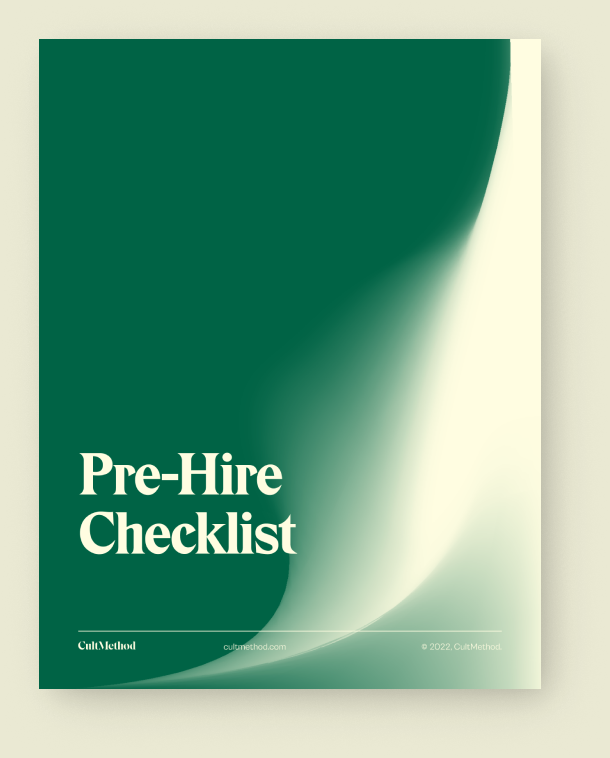Table of contents
- Risk 1: You’re unable to come up with anything
- Risk 2: Your employees hate it
- Risk 3: Your family hates it
- Risk 4: Customers think you’ve sold your business
- Risk 5: People can’t find you anymore
- Risk 6: You grow out of the new name, just like you did the old one
- Risk 7: You flat-out get stuck
- Risk 8: You get crushed on Google
- Risk 9: You get sued
So you want to change your brand name. For whatever reason (there could be dozens), you feel it’s either inappropriate for your brand — or you simply feel it “lacks” something.
You don’t quite know what you want your new name to be, but you do have a vague notion. It doesn’t exist as an object in the physical world yet, only as a Platonic ideal. Basically: you’ll know it when you see it.
But the real question is… Is it worth changing at all?
In this post, I’ll list some of the potential risks of going through a name change — both ones that you’ve already thought of, but hopefully also some less obvious risks. Then, I’ll tell you how to overcome or mitigate them.
Risk 1: You’re unable to come up with anything
Womp-womp. You spend weeks trying to brainstorm a better name, but you fail. Then you hire a branding studio to get professional help.
Together you come up with some good candidates, but for various reasons you’re unable to choose any of them. One already exists, the other turns out to have negative connotations for a large share of your target audience, and so forth.
The project is a bust.
Look: this is a very real risk. It doesn’t happen most of the time, but it does happen regularly.
Usually, the problem is that the name you fall in love with—the one that perfectly embodies the Platonic ideal of your brand name—is already taken.
In this situation, you have to make a decision: is the second-best option better than preserving the status quo?
If your renaming effort was well motivated to begin with, the answer is very likely “Yes”. If so, you owe it to your business to settle. It will hurt: because language and sound is so accessible to you, you tend to get very emotionally involved in the process. Every client I’ve worked with, no matter how business-oriented they were going into the naming process, has turned into an artiste of names.
The problem with artists is that they let their pursuit of perfection get in the way of good enough. That’s why so many of them are broke. For the sake of your business, discard your emotion and view things objectively:
A formally sound name that just doesn’t excite you is still a lot better than a name that causes confusion, subcommunicates the wrong things, is hard for people to spell or pronunce (or whatever problem your existing name has).
Don’t let perfect get in the way of good enough, especially when perfect has already been ruled out.
Risk 2: Your employees hate it
This is also a fairly common problem that companies face when renaming.
Like I said, because naming is so accessible to everyone (it’s a part of everyday life in a way that, for example, design is not), it provokes a lot of strong emotion.
Let’s say you’ve come up with a fantastic name. It ticks all the boxes: easy to spell, easy to pronounce, short and sweet, invokes visual imagery to help memorability, strikes the right tone…
But your employees tell you they hate it.
When this happens, the problem is usually not the name itself.
Instead, the problem is how you present the name change.
When people are faced with the prospect of change, they instinctually revolt against it. Even when the change is positive.
You need to override people’s natural instincts by persuasively explaining the changes that are taking place. The worst thing you could possibly do is just blurt out the new name and hope they all love it. Trust me: they won’t.
Your job as a leader of your business is to get stakeholder buy-in. And not by merely hoping for it or asking politely; you have to get it, go after it, grab it, make it happen. In short:
Your job is to lead.
When presenting the new name, you need to radiate confidence. There can’t be an ounce of hesitation in your voice.
Start by reminding everyone why you have to change the name in the first place. It is too descriptive and you are pivoting into a new market where the name will no longer make sense. It is hard to spell or pronounce and it’s hurting your ability to grow through word-of-mouth. The name is suggestive of “cheap” but you are repositioning into a premium segment of the market…
Whatever the reason, explain it as clearly and emphatically as possible.
Then, explain that the name you have chosen is the result of much work and deliberation, and that you have gone through a tried-and-true process with a branding professional (you did, right? 😛). You have gone through and evaluated hundreds of potential names, and eliminated all of them for various reasons.
Then, warn them that it might not—and probably won’t—be love at first sight. That we all tend to prefer things that we are familiar with, and reject things that are new to us. Make them aware of their own cognitive bias. Tell them that it’s okay if they don’t like the new name at first: brand names build up meaning and associations slowly over time.
Now, reveal the name. Do not open up for discussion. Instead, explain how this new name addresses all the problems that warranted the change to begin with. List all of the reasons why it’s a good name.
If the branding studio you’re working with has done a good job, you’ll even have a couple of mockups to show what the new name might look like on signage etc (just make sure you clarify that what they’re looking at is not indicative of the final logo).
Finally, open up for specific, constructive opinion.
Do not ask: “So, what do you think?”
Do ask: “So this is the new name. Is there anything we have overlooked about the feasibility of this new name — any reason why it may not be easy to spell and pronounce, or that it might carry connotations for our target audience [your employees already know who your target audience is, right?] that would negatively impact their view of our brand?”
Just like in weddings, where the guests are asked to speak up if there’s any reason why the bride and groom cannot get married, the objective of this question is not to find reasons to reject the new name and go back to the drawing board, but to increase buy-in.
Risk 3: Your family hates it
The answer here is simple: you are changing the name of your business because it will help its long-term growth. Your family may not like the new name, but they will like that you continue to be able to provide for them.
Unless your family members are representative of your target audience, it doesn’t matter one bit if they like your brand name or not.
Risk 4: Customers think you’ve sold your business
This is a common concern that business owners have: How will my customers respond to this change? Will they be confused by it? What if they think I’ve sold my business.
Honestly, just as with getting your employees on board, here too the solution is communication.
Depending on what sort of business you’re running, I recommend you do two things to increase customer awareness:
-
A few days ahead of the switch, tell your customers about it via your main communication channels (website blog, email newsletter, relevant social media pages). Explain why you’re making the change (yes, even cue them in on your general brand strategy—this makes them feel like they’re a part of your tribe, and not just consumers). When you make the switch, announce it again and explain why the change will be positive both for you as a company and for your customers
-
If you rely heavily on walk-in traffic/return customers whom you are not able to reach outside the store (if this is the case, you should really get your shit together), also do this: In the week/weeks leading up to the change, whenever someone comes in and buys something from you, make them aware that you will be changing the name of your business soon, but that it will still be run by you, and that they can expect the same products/services and level of service as before. Offer them a leaflet with information about the change (similar to the social media post/email newsletter but in physical form) to bring home
One of the main reasons for customer confusion (and even outrage) is lack of communication. Speak with your customers. Always!
Risk 5: People can’t find you anymore
No matter how much you communicate with your customers, inevitably there will be some people who still don’t find out about your name change.
Google is pretty smart these days, but unless you take the proper precautions, there’s still a significant chance that they’ll be unable to find you online.
First of all: Do not get rid of your old domain name. Keep it (for at least another year) and redirect it to your new domain.
To avoid confusion, add a banner at the top of the website notifying people who have been redirected from the old domain that this is the same business, but with a different name. Include a link to a blog post about the name change/rebrand for extra bonus points.
Oh, and either way, make sure you do write that blog post. It sends another signal to Google that people who are searching for the old brand name should be shown information about the new brand name.
Risk 6: You grow out of the new name, just like you did the old one
If you decide to come up with a new name on your own, there’s a real risk that you will grow out of it, just like you did the old one.
To prevent this from happening to you, read my article on how to name your business before you make any premature decisions. It contains (almost) everything that informs my own approach to brand naming.
Risk 7: You flat-out get stuck
As long as you’re 1) brainstorming with someone else (could be a business partner, for example), and not doing it completely on your own, and 2) going through a clearly defined and tried-and-true process (like the one I outline in the article I just linked to), the likelihood that you’re going to get completely stuck is minimal.
Sometimes, though, you feel like you’re spinning your wheels. If that happens, it might be time consider tapping the expertise of a branding specialist (like me! 😉). Sure, it will cost you money, but it will dramatically increase the likelihood that you’ll start to move forward again, and will improve the quality of the names you do come up with.
Risk 8: You get crushed on Google
Let’s say you come up with a fantastic name. Even if it’s nothing like the names of your competitors, it’s very possible that someone in a tangentially related industry is already using it.
Sure, legally you can use the name, no problem. But intellectual property law is not the only thing that stands between you and that perfect new name: Google can be just as big of a problem.
In a naming project that I did with an online-only car dealership, one of the names we really fell in love with was “Slingshot”. It was truly perfect for this company.
The only problem was that there’s a car maker called Polaris, that makes a three-wheel motorcycle (it looks like a tiny and super-sporty roadster) called the Slingshot.
Most people have never heard of the Polaris Slingshot, so our perfect name wouldn’t have caused any confusion for that reason. It also would’ve been OK in terms of trademark law: “Slingshot” being an already-existing word, a brand in a different industry could not claim infringement.
The problem? Google.
If you google “Slingshot cars,” every single search result is about the three-wheel motorcycle: product information, video reviews, and even a list of dealerships that sells it.
There was no way my client was ever going to show up in the search results. Going up against a billion-dollar company that’s sold a Slingshot motorcycle for over 6 years would be futile. Even though our target audience wouldn’t be confused by the name itself, they would absolutely be confused by the dozens of completely irrelevant search results that would be dominating their Google searches.
The solution? Go with a different name.
This is a risk that can easily be mitigated by running the types of Google searches that your customers are likely to make when they go to look for you online.
If a far more established brand dominates the results, the name is probably a non-starter for you. Move on.
Risk 9: You get sued
Finally, your new name might infringe on someone else’s intellectual property rights, and you might get sued.
For many people, this is the scariest prospect out of all of them. And it’s true, a lawsuit is not only a major headache, but could even bankrupt your company if you’re going up against a much bigger company.
As long as you do your due diligence (i.e. running basic Google searches for the name you want, seeing what shows up, and then doing the same with your country’s trademark database) and use common sense, the odds of you getting into legal trouble are, well, really unlikely.
If your searches do turn up something that causes you to worry, for goodness sake do not listen to a branding specialist (like me!) for advice. We may be great at coming up with names, but we are completely unqualified to give legal advice. Contact an intellectual property attorney. If you have to pay a little extra to make sure your legal bases are totally covered, I should think that’s well worth it for the peace of mind.
Finally, I will leave you with these parting thoughts:
Language is powerful. It literally shapes thought — and even makes it possible in the first place. Your brand name encodes and decodes information about your company to customers. Getting it right is more difficult than naming your first-born. Pay attention, and follow best practices.

Jon Persson
Jon Persson

Hiring a designer? Grab this.
My Pre-Hire Checklist gives you valuable tips to consider before hiring an identity designer.


